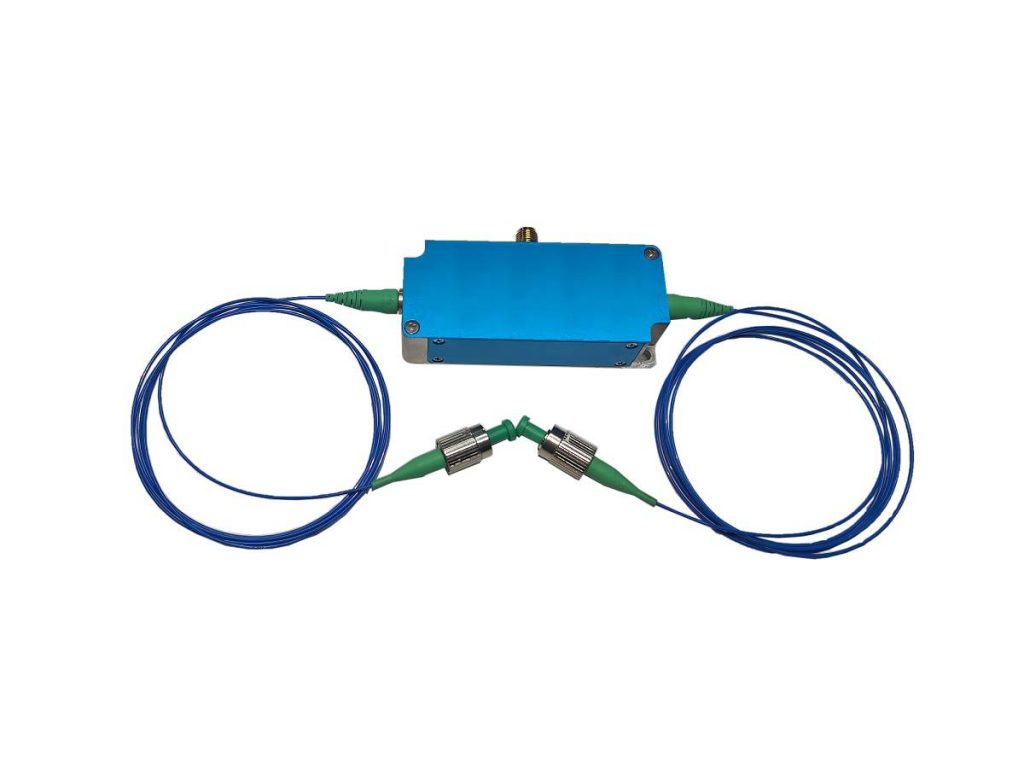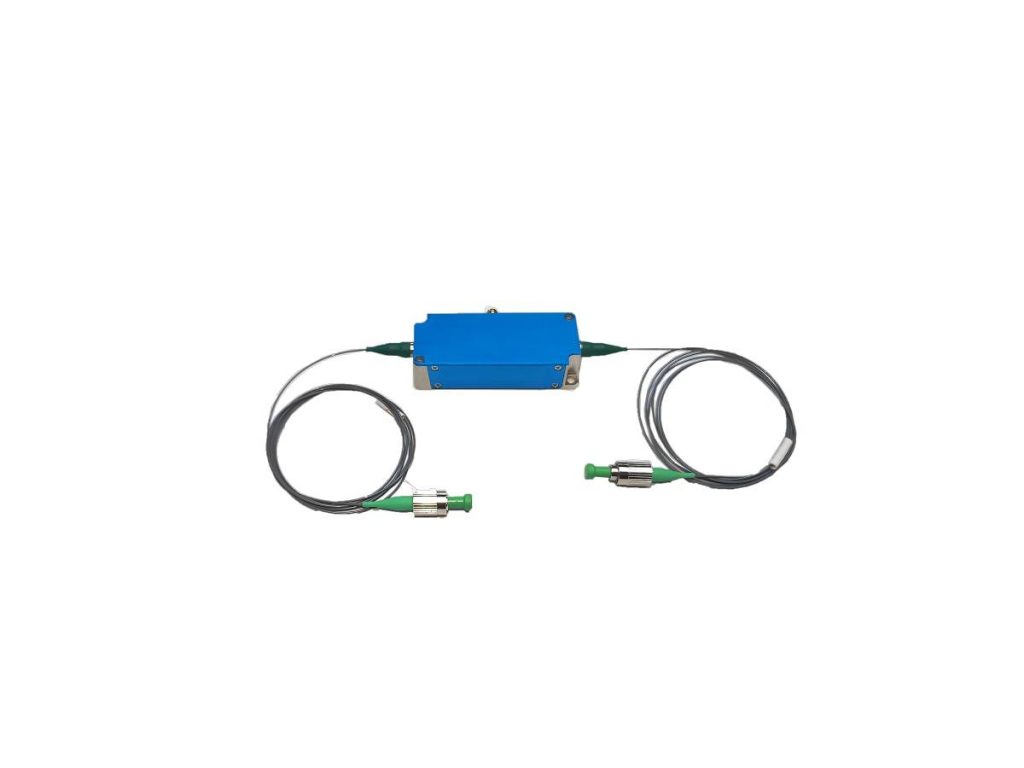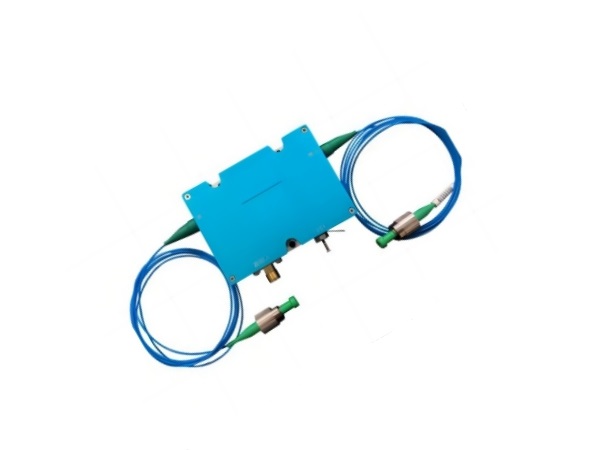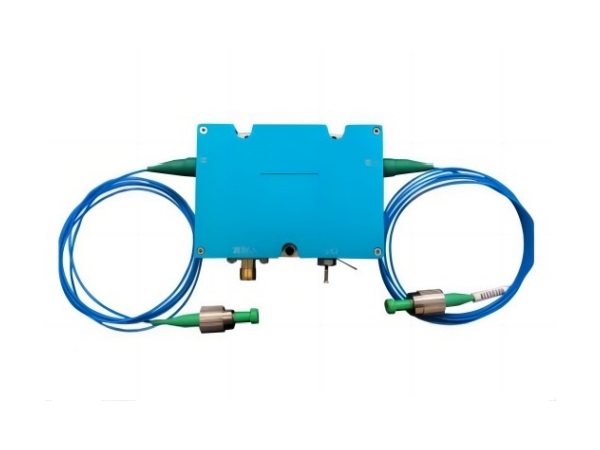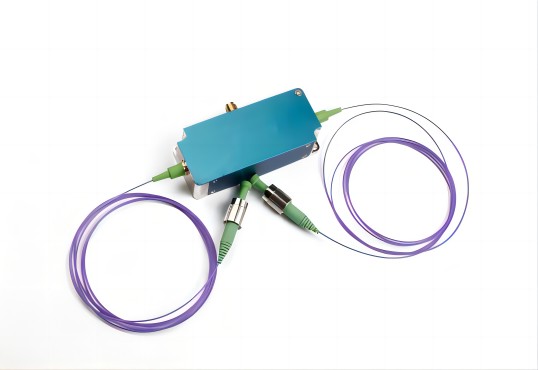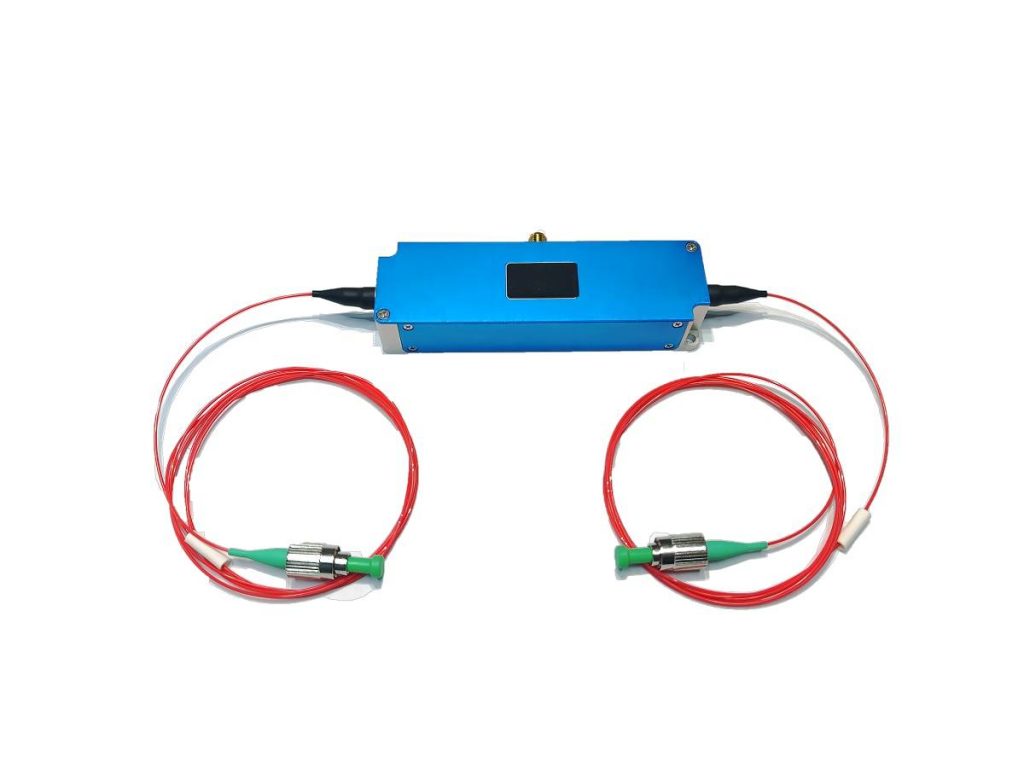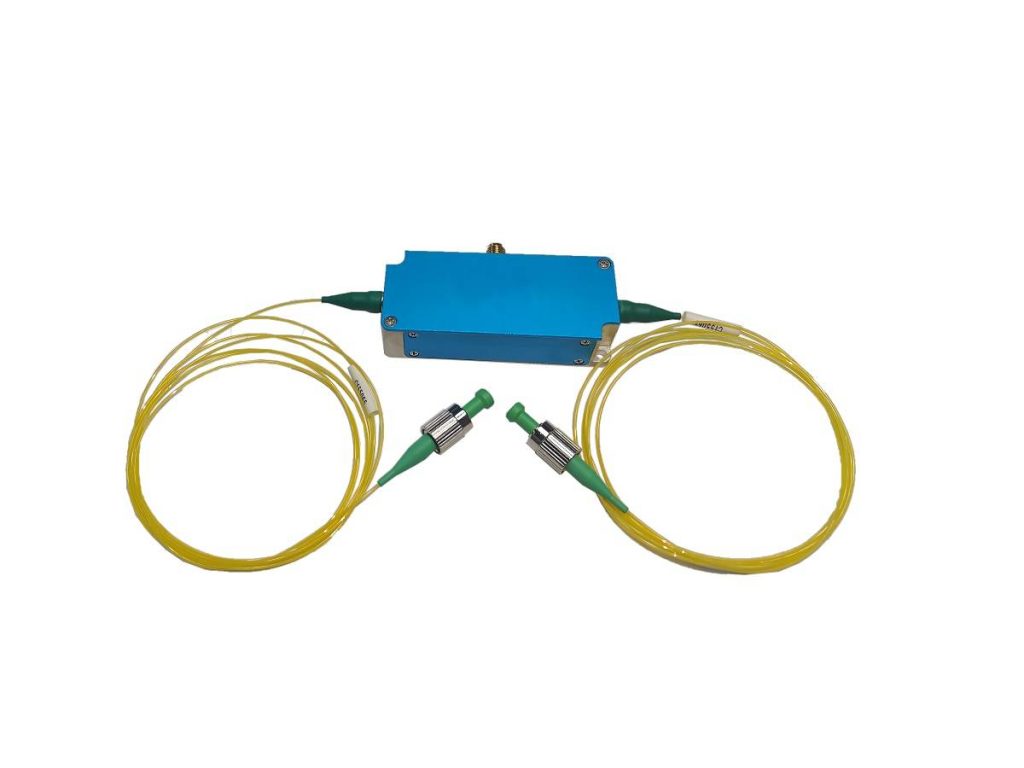Application of Fiber Acousto-Optic Modulator in Acousto-Optic Q-Switch
Acousto-optic modulators are commonly used in the design and manufacture of integrated circuits, as discussed in this paper. Furthermore, AOMs have been widely used in the design and manufacture of Acousto-Optic Q-Switches, which are widely used in the field of integrated circuit design. The AOM system was utilized to investigate the relationship between the two. It seeks to investigate the advantages of AOMs in AOQS, thoroughly examine their performance in specific applications, and compare fiber-based AOMs to traditional AOMs. We hope that this series of discussions will provide valuable insights and guidance for future research and applications in related fields.
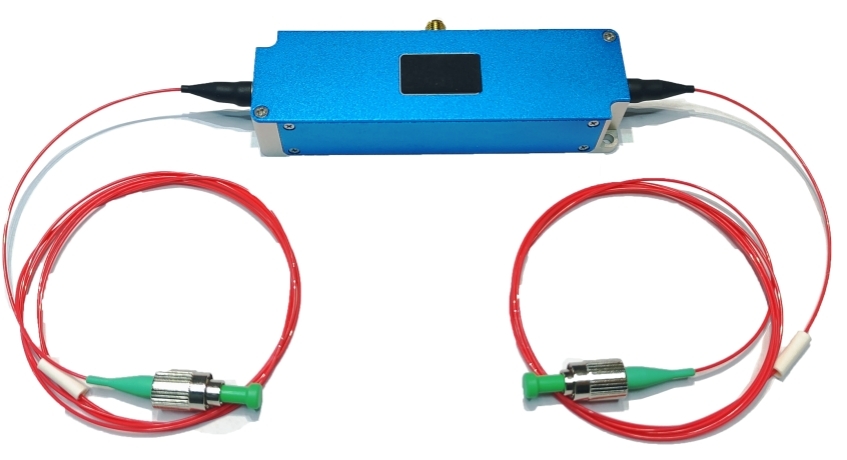
Benefits of Using Acousto-Optic Modulators in Acousto-Optic Q-Switch
The application of acoustic optical modulators in acoustic optical Q-switches has many advantages:
- High-efficiency signal conversion: AOMs are efficient at converting electrical signals into optical signals, which is critical for controlling optical frequency and intensity in modern optical systems such as Q-switched lasers, ion traps, and optical tweezers.
- High-power tolerance: AOQSs are typically constructed of high-quality optical materials with high damage threshold coatings, making them ideal for high-power intracavity pulse control applications.
- Performance improvement on integrated platforms: Recent studies indicate that acoustic optical devices perform well on integrated platforms, but their optical signal conversion efficiency could be improved further. By optimizing the design, efficient acoustic optical interaction can be achieved, with optical conversion efficiency approaching unity.
- Nonreciprocal optical field propagation: Using one-way phase matching, AOMs can also demonstrate nonreciprocal propagation of optical fields with an isolation ratio of more than 10 dB, opening up new possibilities in optical signal processing, quantum transduction, and nonmagnetic optical isolation.
The use of AOM in AOQS not only improves signal conversion efficiency and system stability but also broadens its potential applications in multi-wavelength operation and non-reciprocal optics.
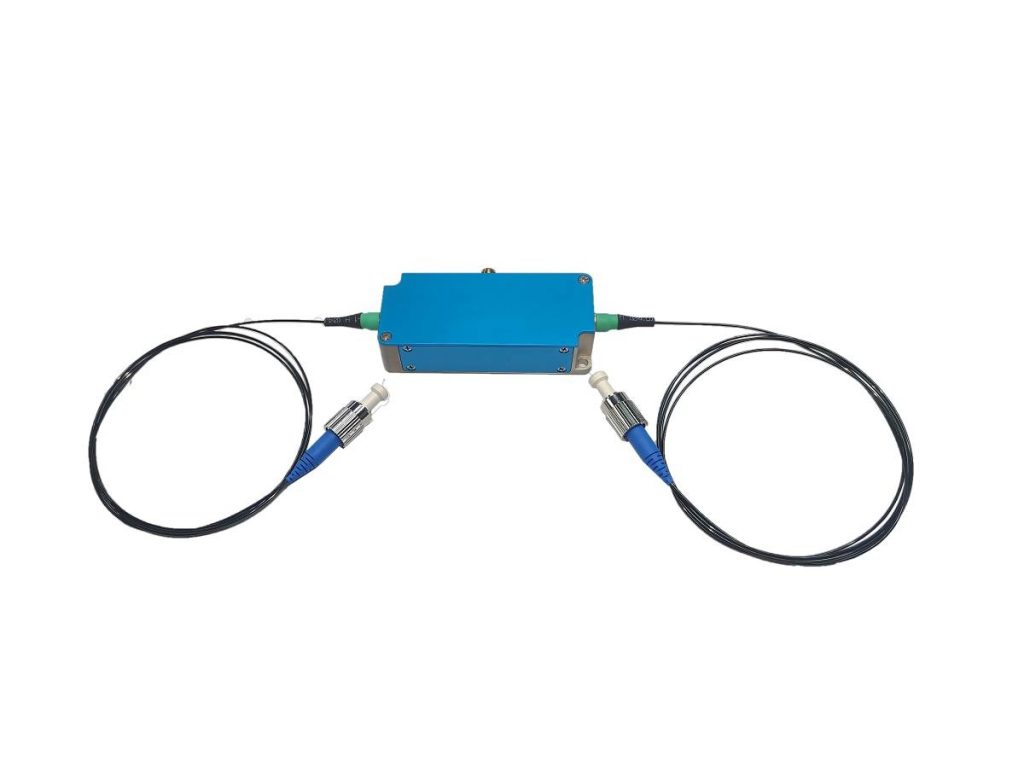
Specific Application of Acousto-Optic Modulation in Acousto-Optic Q-Switch
Acousto-Optic Modulation technology is used in Acousto-Optic Q Switches primarily to control the laser beam’s transmission path and phase state. When RF power is applied to the AOM, it deviates the majority of the incident laser light from the main beam path, destroying the laser cavity’s quality factor (Q value) and allowing high gain to be achieved. This mode of operation allows AOQS devices to have both high modulation loss and low insertion loss.
In addition, recent research has shown that AOMs based on thin-film aluminum scandium nitride photonic platforms can achieve intra-mode, enhanced modal, and cross-mode AOM. These studies not only improve AOM efficiency but also introduce new materials and platforms for high-performance AOM Q switches.
Other research has shown hybrid thin-film lithium niobate microring acoustic-optical modulators that use low-loss chalcogenide waveguides and engineered interdigital transducer electrode configurations to achieve dual-arm microring acoustic-optical modulation. This design significantly improves acoustic-optical coupling strength, resulting in more efficient microwave-light conversion and opening up new possibilities for low-power quantum information conversion.
Acoustic-optical modulation is widely used in acoustic-optical Q switches, which require laser beam control, the development of new materials, and efficient microwave-light conversion. The development of these technologies is critical for improving laser system performance and advancing quantum information processing technology.
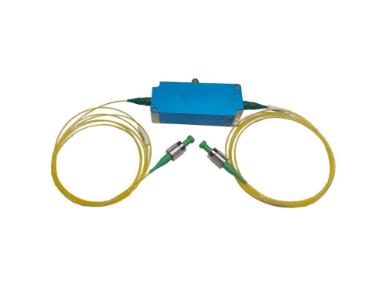
Fiber Optic Acousto-Optic Modulator V.S. Conventional Acousto-Optic Modulator
| Fiber Acousto-Optic Modulator (FAOM) | Common Acousto-Optic Modulator (AOM) |
| A fiber acousto-optic modulator uses sound waves to modulate optical signals. It typically includes acousto-optic grade crystals, stable optical collimators, and high-precision mechanical structures. FAOM has low insertion loss (e.g., 1.2 dB), a high extinction ratio, and a fast response time. FAOM can also be used to modulate and demodulate signals in optical fiber communications, as well as transmit data in optical communication systems. | A general acousto-optic modulator, also known as a Bragg box, is an optical modulator that employs the acousto-optic effect to manipulate diffracted light. AOM can be used to adjust the power, frequency, or spatial direction of a laser beam. The key component of an AOM is an acousto-optic crystal, with a sound wave frequency of around 100 MHz. AOM can be used as a Q switch in solid-state lasers to generate nanosecond or ultrashort pulses, as well as to control the resonant wave loss of round-trip light in the resonant cavity to achieve active mode locking. |
Both can function as Q switches in an acousto-optic Q-switch, but their designs and applications are different. FAOM is better suited for long-distance fiber-optic communication systems because of its fiber-coupling properties, which reduce optical signal loss during transmission. AOM is appropriate for situations requiring quick response and a high extinction ratio, such as Q switching of solid-state lasers; particularly in laboratory or industrial settings, AOM can provide superior performance.
The application scenario determines whether a fiber-optic acousto-optic modulator or an ordinary acousto-optic modulator is used. If long-distance fiber-optic communication is required, FAOM may be a better option; if a fast response and high extinction ratio Q switch is required, AOM may be preferable. When making a decision, factors such as cost, reliability, and maintenance must all be considered.

Conclusion
The use of Acousto-Optic Modulators in Acousto-Optic Q-Switch not only significantly improves laser system performance, but also produces excellent results in a wide range of specific scenarios. Whether in high-precision laser cutting or high-speed modulation in remote communications, AOMs have proven to be essential components.
SMART SCI&TECH, as a dependable supplier of Acousto-Optic Modulators, will provide you with more than just the products. So, if you’re looking for a partner, choose us.

